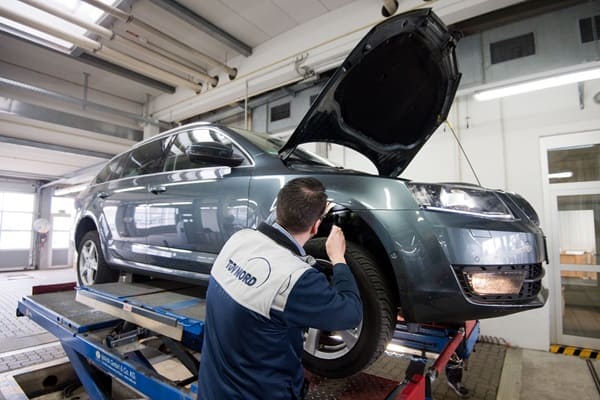Bussiness
Oilfield sector: Leveraging technology to improve safety – London Business News | Londonlovesbusiness.com

Protecting oilfield workers from harm is a top priority for most businesses. And yet tasks on remote well sites and offshore drilling platforms still present safety risks.
So how are these firms using the latest technologies to improve safety?
Here is how.
Robotics and automation
Robotics removes humans from the equation for the most hazardous jobs through:
Automated drilling rig systems
Robotic arms handle drilling pipe connections instead of manual lifting by rig workers which often causes back injuries. On the other hand, automated tubular units load lengths of drill pipe onto the rig lowering the risks of incidences of serious oilfield injuries. And fewer hands-on tasks also reduce dropped object accidents that tend to occur during manual handling of heavy equipment
Autonomous support vehicles
Self-driving trucks and robotic rovers can replace manually driven vehicles to transport drilling supplies, pipes, and tools eliminating collision hazards to workers. This translates to autonomous vehicles programmed for safe operations navigating around the worksite without human errors – which often lead to accidents.
Automated inspections
Operator-controlled drones fitted with cameras, and sensors inspect hard-to-reach areas without risk to human inspectors. Robot crawlers deployed inside storage tanks check seams and take measurements avoiding the need for confined space entry. And unmanned aerial vehicles (UAVs) scan miles of pipeline right-of-way to detect tiny leaks difficult to spot on the ground.
Advantages of automation for health and safety
- Removes workers from hazardous situations that historically led to incidents
- Prevents injuries like falls which enables companies to avoid liability lawsuits
- Faster identification of issues from drones and data allows quicker response to mitigate environmental impacts
- Continuous oversight by machines provide rapid incident alerting to minimise spills
Going hands-free on critical tasks through increased automation provides the oil industry with a path towards zero-incident worksites. This reduces risk and environmental harm while boosting efficiency.
Real-time remote monitoring
With vast oilfields spanning hundreds of miles in remote regions, no worker can be physically present to monitor every well site or piece of production equipment.
However, connectivity and live monitoring allow operators to keep eyes on assets from a central location. Sensors can even automatically detect anomalies and trigger alerts for preventing incidents before they spiral out of control and harm the environment.
The Internet of Things for real-time alerting
- Smart sensors retrofitted to existing equipment like pumps, separators, valves, pipelines
- Cloud platforms analyse telemetry data streaming from the sensors
- Alerts notify control room operators of any parameter going out of spec
- Identifies growing problems like pressure buildup to prevent catastrophic failures
Drones conduct automated inspections
- Operator dispatches on-demand drone flight to facility requiring inspection
- Drone autonomously scans equipment such as storage tanks or difficult to access areas with onboard cameras and sensors
- Collected imagery fed into digital twin system that compares current state against design
- Automatically flags any corrosion, cracks, leaks, or anomalies
Dashboards with actionable insights
- Aggregates real-time data feeds from all connected equipment across oilfield operational environment
- Geo-based display shows all well sites, pipeline networks, offshore platforms etc.
- Leverages data visualisation to highlight issues needing attention
- Provides key insight on production metrics for optimizing output
Why real-time monitoring matters
- Rapid identification of even small problems before they compound into major issues
- Quicker dispatch of response crews to make repairs minimises downtime after failures
- Reduces number of oil spills, gas leaks and other environmental incidents
- Protects business from profit losses and legal penalties
- Remotely manage equipment in real-time across unlimited oilfields from anywhere
The ability to monitor hundreds of wells or miles of pipeline from a desk makes oilfield operations drastically more safe, efficient, and environmentally friendly – while saving lives in the process.
Big data analytics
Beneath the surface of oilfields lies complex hydrocarbon reservoirs that hold precious fuel. Understanding these subsurface environments better allows operators to strategically extract oil and gas more sustainably. Big data analytics unlocks new intelligence to optimize planning and operations.
Machine learning reveals reservoir insights
- Analyzes massive combination of data from sensors, satellites, seismic scans
- Advanced algorithms interpret millions of data points beyond human capability
- Maps subsurface geology revealing sweet spots for surgically precise well placements
Simulation models optimize planning
- Digital twin technology creates virtual copy of real-world oilfield environment
- Simulates drilling plans and production scenarios to predict future performance
- Allows testing unlimited what-if situations to determine the optimal way forward
Prescriptive analytics guide operations
- Monitoring infrastructure plus real-time data feeds from well sites
- Identifies optimisation opportunities based on current operating conditions
- Directs field technicians and engineers with precise actions to improve output
Environmental and financial benefits
- Carefully managed wells and production rates prevent strains leading to failures
- Optimised operations reduce waste, needless flaring, truck rolls, and energy usage
- Increased output from each well lowers surface footprint enabling conserved land use
- Higher margins from maximised oil extraction with minimal additional drilling
Sophisticated data analytics transforms how modern oilfields operate – enabling precision extraction of natural resources while benefiting the environment. Previously obscure insights allow strategic planning and real-time adjustments for lean, green, and financially sound fossil fuel production.
The future oilfield powered by AI
Emerging innovations in the Internet of Things (IoT), machine learning, automation and augmented reality seem ripped from science fiction. However, applied to oil drilling and production, these technologies will transform worksites into ultra-efficient, hyper-connected, and ecologically intelligent landscapes of the future.
Physical-digital convergence
Every infrastructure asset is equipped with sensors streaming data to the cloud. They are then continuously optimized by AI algorithms far exceeding human analysis. And there are also augmented interfaces like AR glasses that extend virtual insights directly to workers
Autonomous operations without on-site personnel
Robotically controlled drilling rigs and semisubs run complex operations without human oversight. At the same time, drones and crawler robots handle inspections, and repairs, guided by AI decision-making algorithms. This ensures no personnel is needed on location except the emergency response team nearby.
Incident-free efficiency
Assets are remotely adjustable in real-time, which prevents abnormal parameter conditions. There is also instant anomaly detection combined with automated responses that ensure no human-caused disasters. Which translates to optimized production via AI – eliminates waste, and minimizes environmental harm.
The business benefits
These are just a few examples of how adoption of safety and environmental technologies creates tangible business benefits across the oil and gas sector:
- Improved compliance – New monitoring and minimization of spills and emissions helps companies adhere to environmental regulations and avoid major fines, lawsuits or damage to corporate image.
- Increased efficiency – Automating dangerous manual tasks and enabling remote control of operations reduces labor expenses and frees up employees for more productive activities.
- Reduced insurance costs – Documented use of advanced safety systems makes companies eligible for lower insurance premiums on policies for workers’ compensation, asset damage or business interruption from accidents.
- Legal risk reduction – With better visibility into field conditions and early control of potential hazards, companies slash their litigation exposure – and the need to call an oilfield accident lawyer – as a result of workplace injuries or pollution incidents.
- Enhanced reputation – Leading safety and sustainability performance boosts consumer and public confidence in an oil company’s commitment to corporate responsibility. This builds brand loyalty and public license to operate.
Challenges to Adoption
While promising, there are barriers slowing wider adoption of these modern technologies across the vast oil and gas supply chain:
- Expense – Sophisticated safety monitoring sensors, controls, drones, satellites and analytics software can require major upfront capital expenditure. Many small operators lack financial reserves to upgrade all their infrastructure.
- Compatibility issues – Most equipment in the field is aging and lacks digital connectivity or data interfaces needed to feed sensor outputs into modern analytics systems. Physical integration and cybersecurity also pose challenges.
- Talent shortages – Most companies face stiff competition in recruiting skilled technical specialists who can operate, maintain and derive insights from complex new safety and sustainability technologies.
- Data complexity – The sheer volume of monitoring data created by ubiquitous sensors, daily operations software, and other digital systems overwhelms many corporate IT teams. Identifying meaningful insights is difficult without more data scientists and advanced analytics solutions.
Overcoming adoption barriers
Thankfully, various initiatives are now helping oilfield businesses to surmount these adoption barriers:
- Cloud computing platforms enable affordable, scalable data processing without the need to build internal capabilities.
- Open data standards help ensure interoperability between data systems from different technology vendors.
- Industry associations offer training programs to build digital skills within the existing oil and gas workforce.
- Third-party technology partners and service providers now offer turnkey solutions for complex data capture, analytics and dashboarding.
- Governments provide tax incentives, grants and low-interest loans to encourage smaller operator investment into approved cleantech systems.
- Industry forums allow collaborative knowledge sharing around the practical operating experience with various digital oilfield innovations.
The future is bright
Looking ahead, human-machine collaboration will expand, enabling smoother remote operations and freeing up the workforce for higher cognitive-level activities. Intelligent control systems will provide automation, autonomy, insight and risk reduction at new scales. With appropriate digital investments and cultural change, responsible oil and gas companies can profoundly enhance their social license to operate for decades to come.








